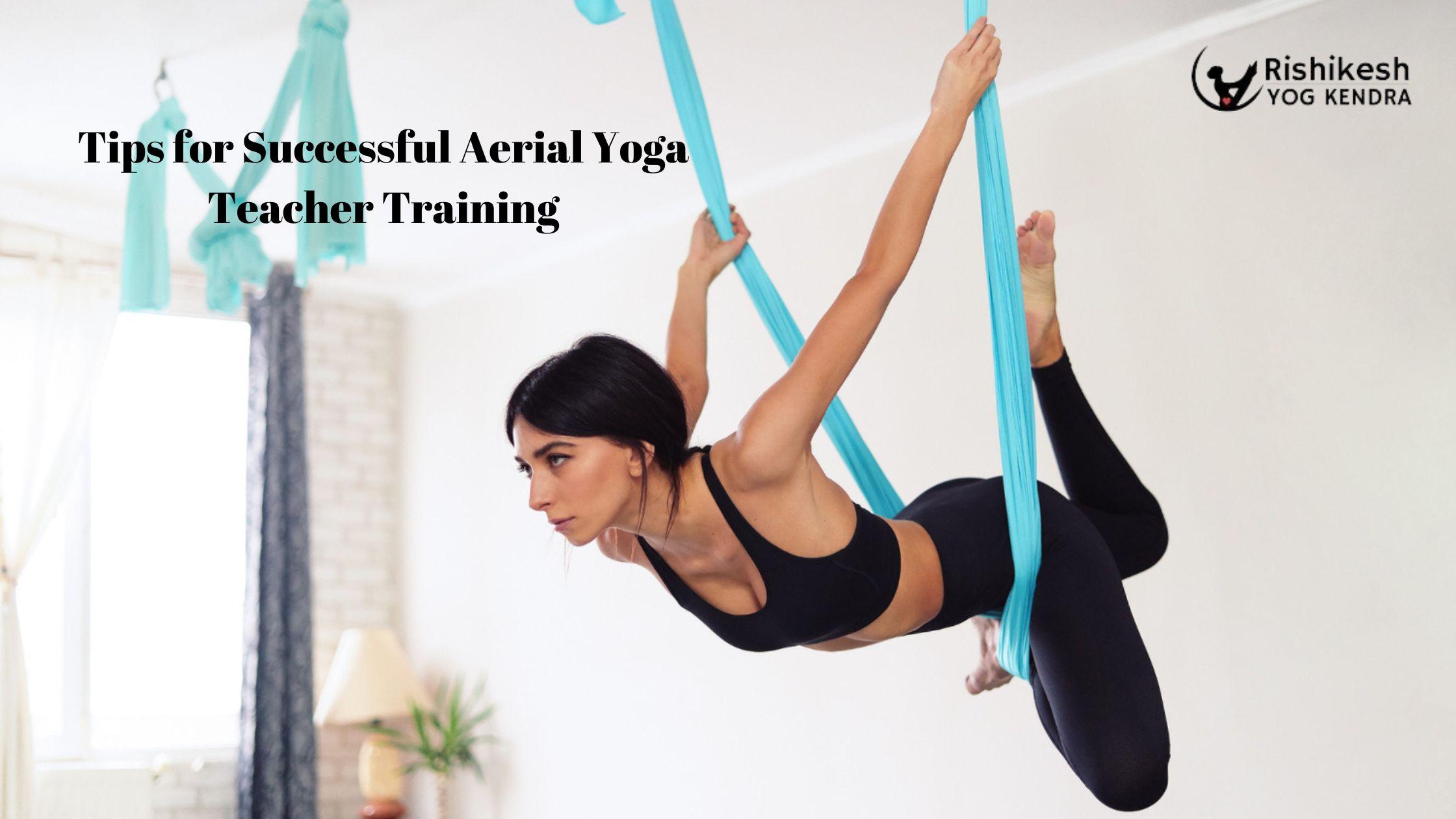Tips for Successful Aerial Yoga Teacher Training

The journey to become an Aerial Yoga teacher is an exciting and transformative experience. As an emerging trend in the fitness and wellness world, Aerial Yoga combines traditional yoga poses, Pilates, and dance with the use of a hammock or silk to support and elevate the body. To ensure a successful Aerial Yoga Teacher Training, it’s essential to approach the process with the right mindset, preparation, and dedication. Here are some tips to help you make the most of your training.
1. Choose the Right Training Program
The first step in your journey is selecting a reputable Aerial Yoga Teacher Training program. Research various schools and instructors to find one that aligns with your goals and values. Look for programs that are accredited and have experienced, knowledgeable instructors. Consider factors such as the curriculum, location, duration, and cost. Reading reviews and testimonials from past participants can also provide valuable insights.
2. Build a Strong Foundation
Before diving into Aerial Yoga Teacher Training, it’s beneficial to have a solid foundation in traditional yoga. Familiarize yourself with basic yoga poses, terminology, and principles. This will make it easier to adapt to the aerial variations and understand the underlying mechanics of the practice. Additionally, gaining some experience with Aerial Yoga classes can give you a sense of the movements and challenges involved.
3. Develop Physical Strength and Flexibility
Aerial Yoga requires a good level of physical fitness, including core strength, upper body strength, and flexibility. Practice traditional yoga, Pilates, and strength training to build the necessary muscles and enhance your flexibility. The stronger and more flexible you are, the easier it will be to perform and teach aerial poses.
4. Cultivate Mind-Body Awareness
Aerial Yoga emphasizes the connection between mind and body. Cultivating mindfulness and body awareness is crucial for both your personal practice and teaching. Engage in practices such as meditation, breathwork, and mindful movement to enhance your ability to stay present and attuned to your body’s sensations. This awareness will help you guide your students safely and effectively.
5. Learn About Anatomy and Physiology
A solid understanding of anatomy and physiology is essential for any yoga teacher, especially in Aerial Yoga where the body is suspended in the air. Familiarize yourself with the major muscle groups, joints, and the skeletal system. Understanding how the body moves and functions will enable you to teach with greater precision and safety, and to modify poses for different students’ needs.
6. Focus on Safety
Safety is paramount in Aerial Yoga. Learn how to properly set up and secure the hammock, and understand the weight limits and guidelines for its use. Pay attention to common safety concerns, such as joint alignment, grip techniques, and avoiding excessive strain on the neck and lower back. Always emphasize the importance of listening to one’s body and avoiding pushing beyond comfortable limits.
7. Develop Teaching Skills
Teaching Aerial Yoga requires a unique set of skills. Practice clear and concise communication, as students need to understand how to move safely and correctly in the hammock. Develop your ability to give verbal cues, demonstrate poses, and provide hands-on adjustments when necessary. Create a welcoming and supportive environment where students feel comfortable exploring and learning.
8. Stay Open to Learning
The field of Aerial Yoga is constantly evolving, with new techniques and approaches emerging regularly. Stay open to learning and growing as a teacher. Attend workshops, conferences, and advanced training sessions to keep your skills and knowledge up-to-date. Networking with other Aerial Yoga teachers can also provide valuable insights and inspiration.
9. Practice Patience and Persistence
Becoming a proficient Aerial Yoga teacher takes time, patience, and persistence. There will be challenges and setbacks along the way, but maintaining a positive attitude and staying committed to your practice will help you overcome them. Celebrate your progress and recognize that every step forward, no matter how small, is a step towards your goal.
Read More: What Are the Requirements for Aerial Yoga Teacher Training?
10. Nurture Your Passion
Passion is the driving force behind successful teaching. Stay connected to your love for Aerial Yoga and let it inspire your practice and teaching. Share your enthusiasm with your students and create a joyful, uplifting experience for them. Remember that teaching is not just about instructing poses, but also about fostering a sense of community and well-being.
Conclusion
Aerial Yoga Teacher Training is a rewarding journey that combines physical, mental, and emotional growth. By choosing the right program, building a strong foundation, developing your physical and teaching skills, and staying open to learning, you can become a successful Aerial Yoga instructor. Embrace the process with patience and passion, and you’ll not only transform your own practice but also inspire and uplift others through the art of Aerial Yoga.
- Art
- Causes
- Best Offers
- Crafts
- Dance
- Drinks
- Film
- Fitness
- Food
- الألعاب
- Festival
- Gardening
- Health
- الرئيسية
- Literature
- Music
- Networking
- أخرى
- Party
- Religion
- Shopping
- Sports
- Theater
- Wellness



